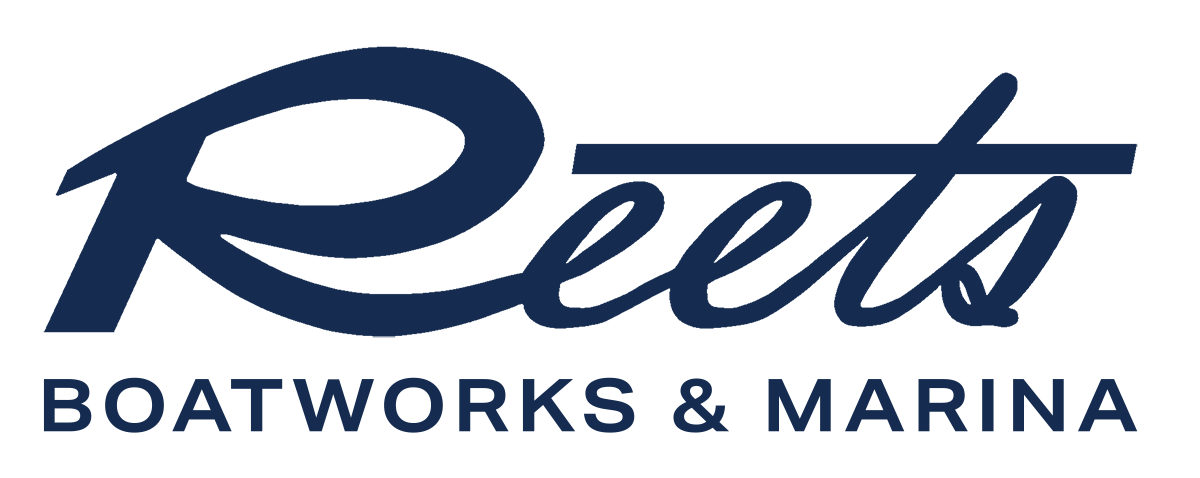No matter how much experience you have, it’s always a good idea to review boating safety rules and regulations before heading out on the water. To help you boat responsibly and enjoy your time on Great Sacandaga Lake, here are our safety tips for boaters.
Obtain a New York State Boater Safety Certificate *New Requirement for 2025*
As of January 1, 2025, all boat operators in New York State must complete a boating safety course and obtain a certificate from the NYS Office of Parks, Recreation and Historic Preservation. Boating Safety Certificates are valid for life, but the physical certificate must be on board when operating a motorized boat. Boating safety courses can be taken online or in-person, and New York recognizes Boating Safety Certificate from other states.
If you are renting a boat on Great Sacandaga Lake from Reets Bayside Marina, we provide basic safety instruction, so you do not need a Boating Safety Certificate as long as you are 18 years or older.
Wear Life Jackets
On any New York State waterway, including Great Sacandaga Lake, every boat must carry at least one US Coast Guard-approved personal flotation device (life jacket) for each person on board. Vessels 16 feet and longer must also carry a throwable flotation device.
Children under 12 must wear a life jacket at all times when on the water. In addition, anyone on a personal watercraft (PWC) or being towed behind a boat must wear a life jacket.
Carry Additional Safety Equipment
Depending on the size of your vessel and whether or not it is open construction, you may also be required to have the following safety equipment on board.
- Anchor & Line
- Bell
- Whistle or Horn
- Visual Distress Signal
- Navigation Lights
- Anchor Lights
- Fire Extinguisher
Follow Navigation Rules
Similar to traffic laws, boating navigation rules help prevent collisions and ensure safe navigation on the water. These rules dictate how boats should interact with each other in various situations, including crossing paths, meeting head-on, and overtaking.
- Overtaking (Passing) – the boat being passed has the right-of-way, and the overtaking vessel must maintain a safe distance from the vessel being overtaken. You can pass on either side, but passing on the starboard side, or to the right of the other vessel is generally preferred.
- Crossing – when two boats are crossing paths, the vessel on the right has the right-of-way, and the other boat should slow down and allow it to pass.
- Meeting Head-On – both boats should alter course to starboard and pass port-to-port. Meaning, each boat should turn to the right, so the other boat passes on their left.
Familiarize Yourself with No Wake Zones
On any New York State waterway, including Great Sacandaga Lake, no vessel may exceed 5 MPH when within 100 feet of the shore. Additional no wake zones on the Great Sacandaga Lake include the Northville Bridge and the Batchellerville Bridge area.
Obey Channel Markers & Buoys
When the Great Sacandaga Lake is at its higher water levels you can navigate almost anywhere without problems. However, to be safe, it is very important to stay between the red and green channel markers.
- Red Channel Marker – keep the buoy on your starboard (right) side and do not pass between the buoy and the shore.
- Green Channel Marker – keep the buoy on your port (left) side and do not pass between the buoy and the shore.
Similar to traffic signals on the road, buoys are an important safety feature on the Great Sacandaga Lake that must be obeyed.
- White Buoy with an Orange Circle – represents a controlled area where boating is restricted. The specific restriction is usually indicated in black lettering. Common restrictions include speed limits, no wakes, no fishing, no anchoring, no water skiing, and personal warcraft only.
- White Buoy with an Orange Diamond – represents a hazard or danger to boaters, such as shallow water, or submerged rocks and shoals. The specific hazard is typically indicated in black lettering. Proceed with caution and maintain a safe distance from the buoy.
- White Buoy with an Orange Diamond and an X in the Center – represents an area of water where boating is prohibited. Also known as a “Keep Out Buoy”, these buoys can indicate a swimming area, low bridge, dams or rapids.
- White Buoy with an Orange Square – represents information of interest to boaters, such as directions and distances, landmarks and amenities.
Additional Safety Tips
In addition to understanding navigation rules, markers and buoys, and carrying the proper safety equipment, here are a few additional safety precautions to keep in mind when boating on Great Sacandaga Lake.
- Operate at a safe speed at all times, especially in crowded areas. Stay alert, and steer clear of large vessels and watercraft that may be restricted in their ability to stop or turn.
- Be cautious of the lake’s bottom, especially in the late summer, when lower water levels can be hard on props and lower units.
- Keep watch around the propeller area when people are in the water. Never allow passengers to board or exit the boat from the water when engines are on or idling, and be careful near boats towing skiers or tubers.
- Do not drink and drive. Operating a boat while under the influence of drugs or alcohol is illegal, and is the cause of nearly half of all boating accidents.
Safe Boating with Reets Bayside Marina on Great Sacandaga Lake
Reets Bayside Marina on Great Sacandaga Lake provides basic safety instruction to anyone renting a pontoon boat from our location, and offers free, unlimited on-the-water training with certified boat captains for all Freedom Boat Club Members. To learn more about safe boating on Great Sacandaga Lake, give us a call at (518) 332-3629, or contact us online.

